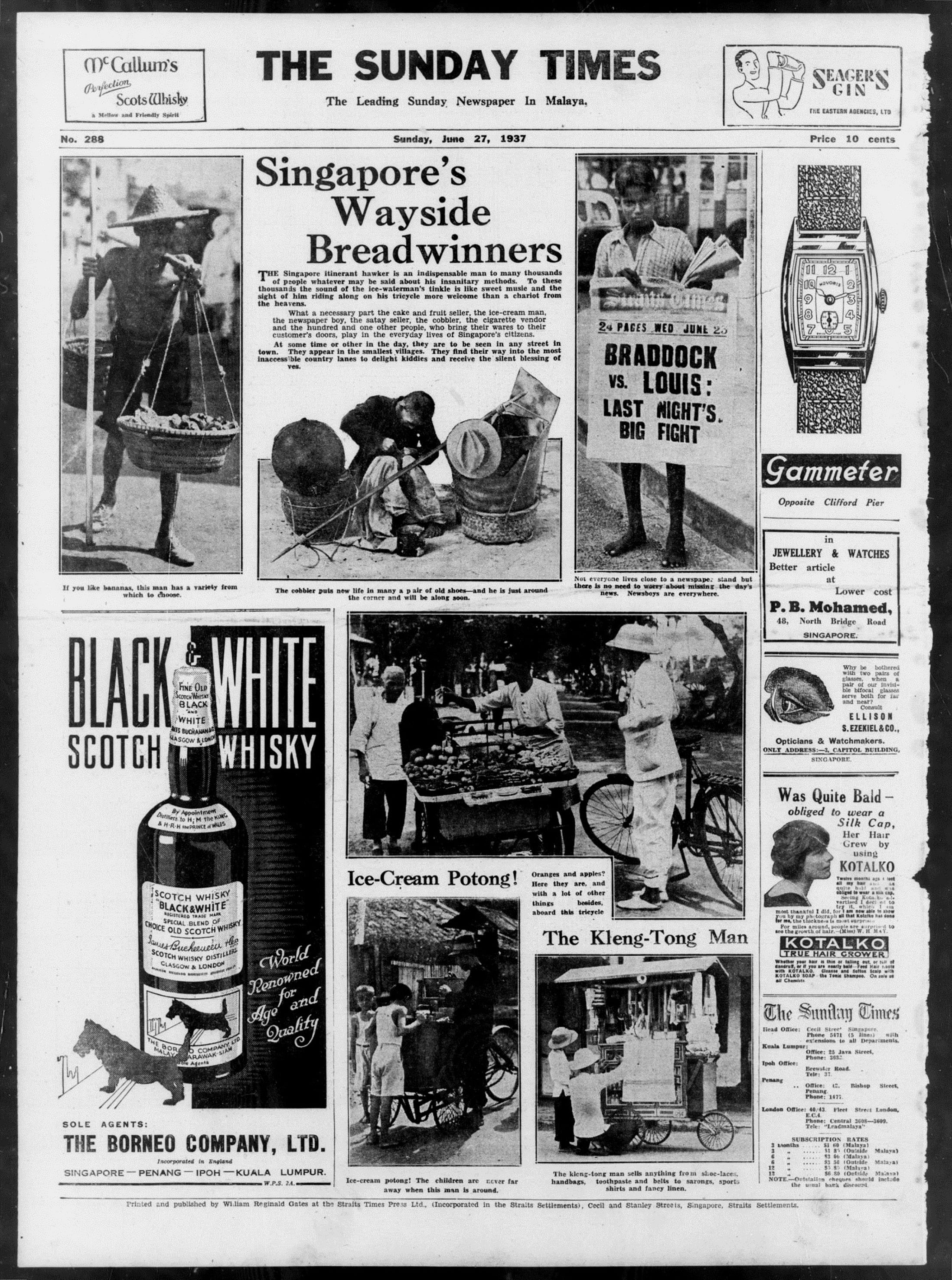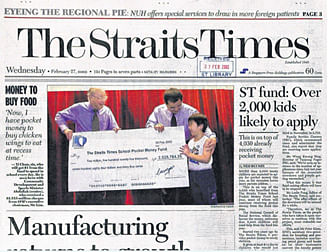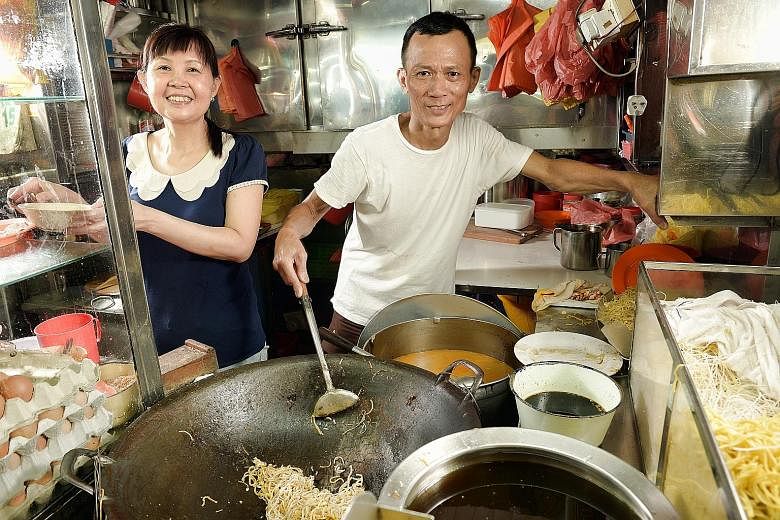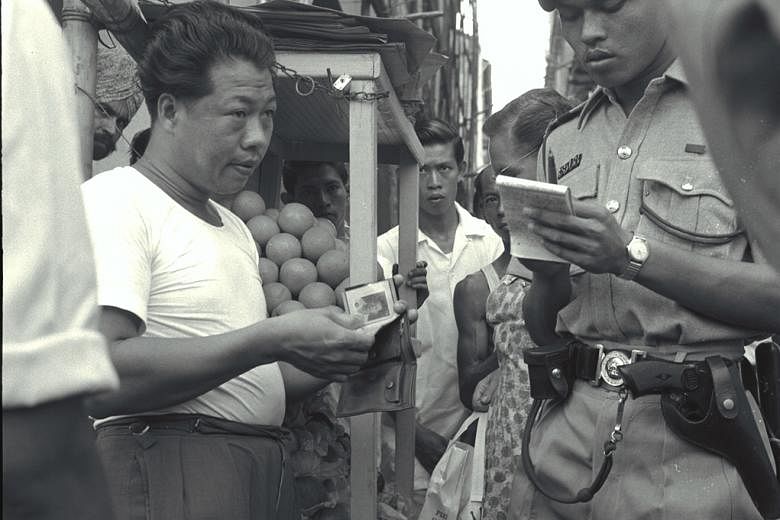There was a time when hawkers riding trishaws with tinny bells were as common a sight in Singapore as are people today with eyes glued to smartphones.
Until they were swept off the streets and moved into markets with roofs, walls, taps, drains and gas connections, the hawkers were footloose purveyors of cheap food described simultaneously as tasty and of doubtful quality. A somewhat endangered species today, the hawkers made it through the rough, early days of Singapore and even defined those times.
At the turn of 19th century, hawkers began to make cameo appearances in The Straits Times - for all the wrong reasons. Sometimes, they were accused of crime or engaging in questionable activity. One of the earliest mentions of a hawker is from the July 28, 1898 edition. The unnamed man was "fined with two dollars, or three days, for gambling with cakes with children".
Another, also unnamed, was fined $15, in default of 15 days' rigorous imprisonment, for "obstruction with baskets" on March 13, 1901. He had been fined earlier, the short report noted grimly. Was he perhaps the same man who was fined $2 on March 5 for slapping a woman on the face? "Evidence showed that the woman quarrelled with the hawker over the purchase of some fruit. He objected to her returning the fruit and she tore his coat. He slapped her face."
One of the earliest pictures of a hawker appeared in The Straits Times on Jan 24, 1934. Woolworth's on wheels! said the caption of the faded black-and-white photograph of a man on a trishaw, his face in shadows under the trademark conical hat. "This enterprising hawker can sell you anything from a pair of chopsticks to a dinner service," it continued. Readers never learnt his name though.

Still, by then, the hawker had assumed a certain place in the Singaporean's life. He had come to seem desirable. The Sunday Times of June 27, 1937 almost saluted him with a photo spread.
"The Singapore itinerant hawker is an indispensable man to many thousands of people, whatever may be said of his unsanitary methods. To these thousands, the sound of the ice-waterman's tinkle is like sweet music and the sight of him riding along on his tricycle more welcome than a chariot from the heavens.
"What a necessary part the cake and fruit seller, the ice-cream man, the newspaper boy, the satay seller, the cobbler, the cigarette vendor and the hundred and one other people, who bring their wares to their customer's doors play in the everyday lives of Singapore's citizens.
"At some time or the other in the day, they are to be seen in any street in town. They appear in the smallest villages. They find their way into the most inaccessible country lanes to delight kiddies and receive the silent blessing of eyes."
Villages and country lanes? That was Singapore then and The Straits Times' expatriate writers acknowledged the wayfaring vendor for providing affordable and nutritious food to the poor.
He was even seen as a man of creative imagination. The Straits Times reports have chronicled him selling food to people through the slums and settlements. In 1930s Chinatown, for instance, it was common to see "baskets being lowered from the fourth storey to the hawker in the street", in what was probably the country's first incarnation of home delivery.
But mostly, it was concluded, the hawker was a nuisance. His unsanitary methods caused disease, especially the reckless disposal of refuse.
LIFE & TIMES: HAWKERS continued...
• Our city picture spread: • The Straits Times has chronicled, in picture and prose, the changing face of Singapore.
1998
FULL COLOUR
The Straits Times goes full colour.

2000
POCKET MONEY FUND
Launch of The Straits Times School Pocket Money Fund, a community project to help children from low-income families with school expenses. The fund supports over 10,000 children and young people every year. It has disbursed close to $42 million and benefited over 130,000 cases up to 2014.

TV NEWS
SPH sets up SPH MediaWorks Ltd to make a foray into broadcasting. The Straits Times launches a nightly TV news bulletin in the following year. This is pulled off the air in 2004 when the TV venture folds.


